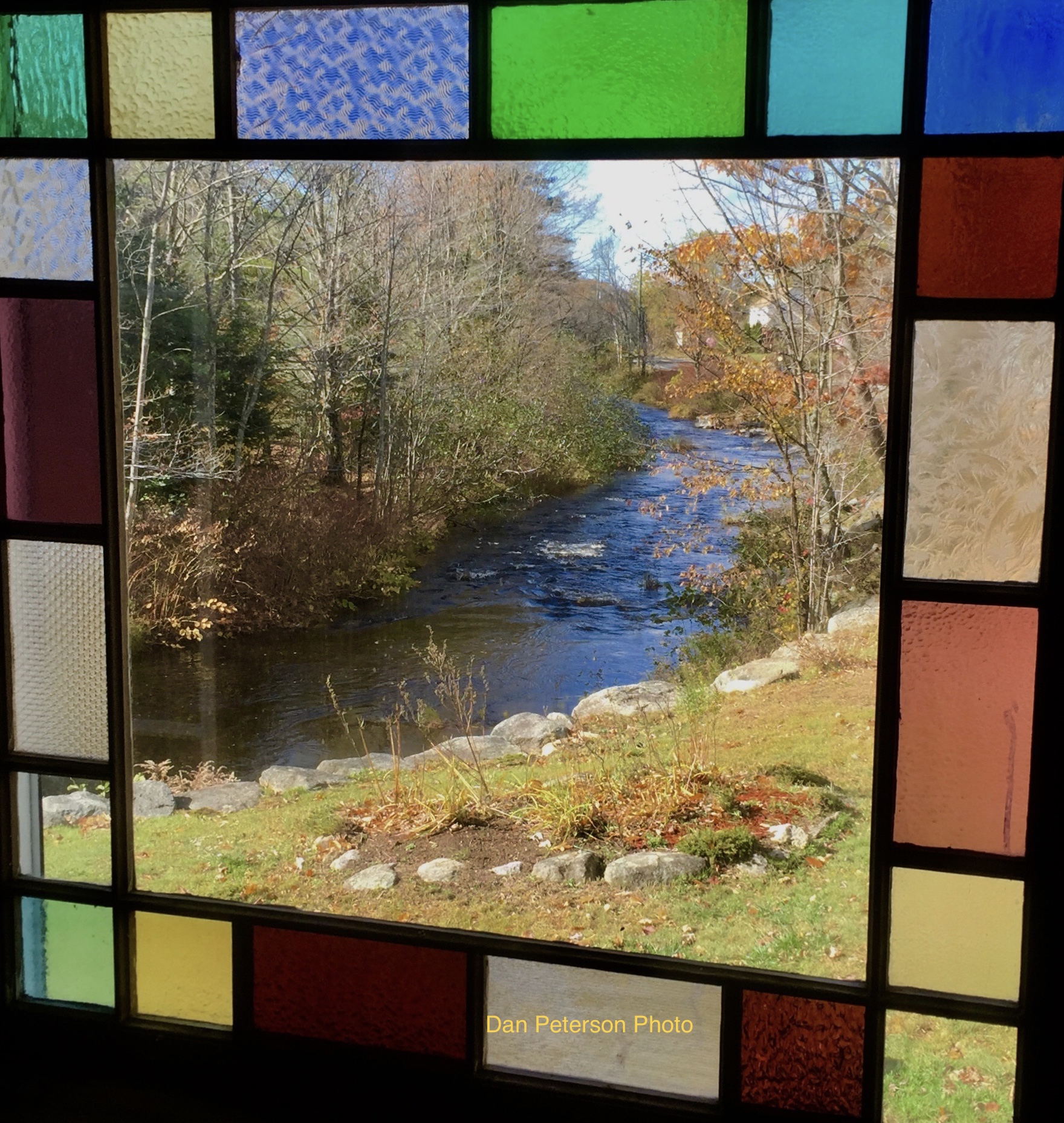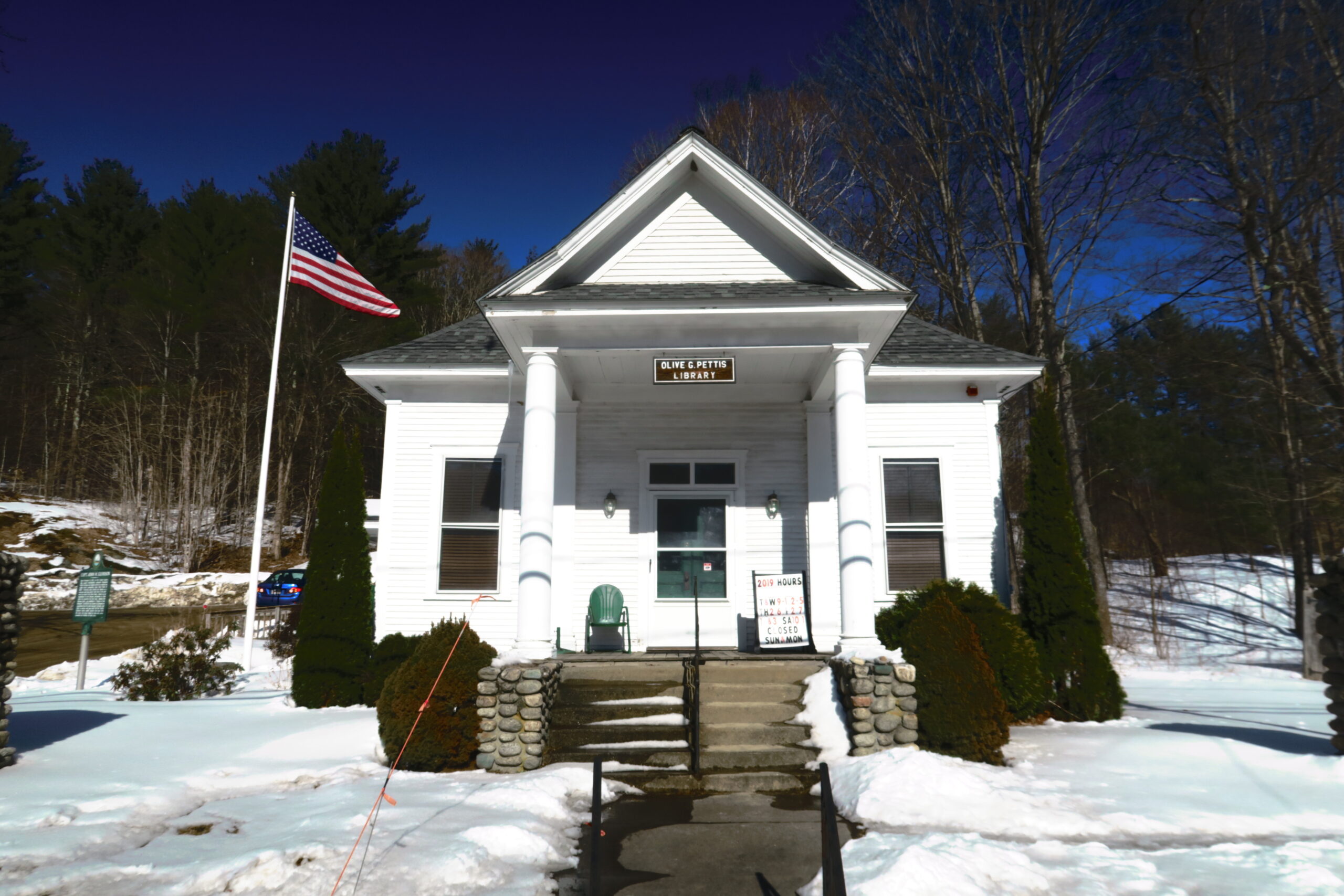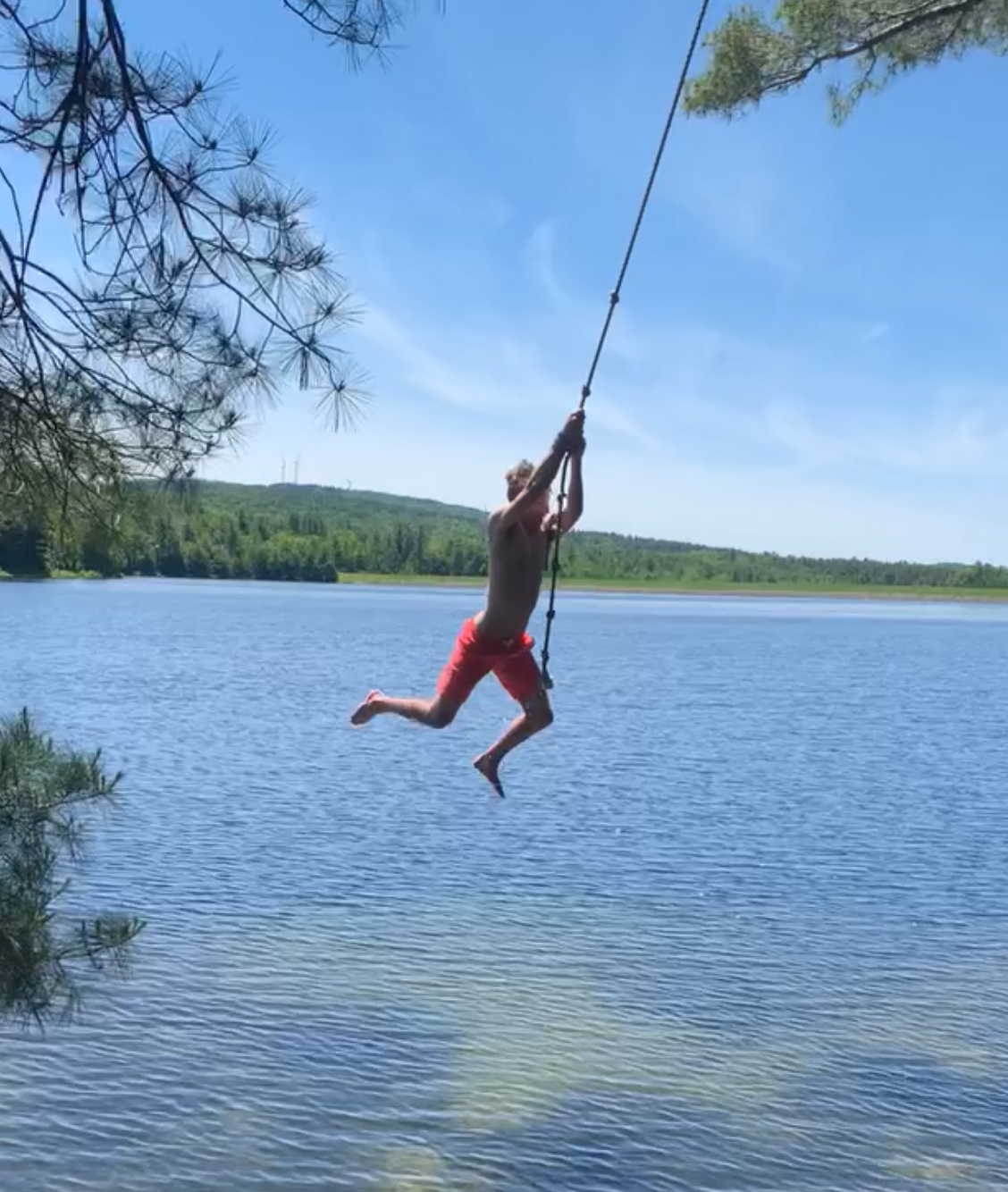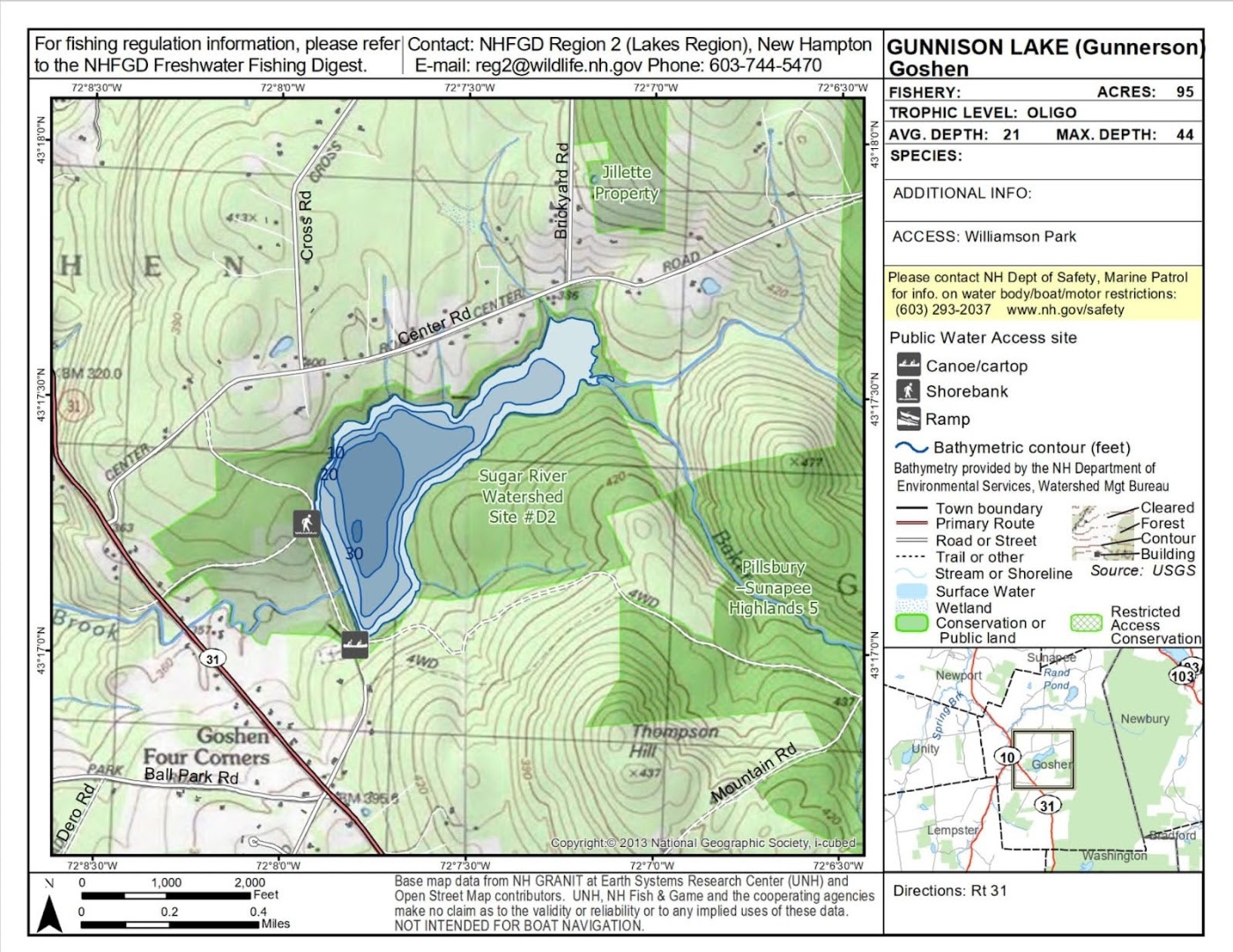Goshen
Goshen is nestled in the Mount Sunapee foothills along the Sugar River. The town was established in 1791 and is located on the county’s eastern border. Its main attraction, Gunnison Lake, better known as “The Goshen Ocean” by residents, is a 60-acre man-made lake that provides a tranquil spot for canoeing, hiking, picnicking, kayaking, and birding. For a peaceful walk around the lake, take the Ruth LeClair Memorial Trail. For a rowdier activity, the Strategy Zone in Goshen can entertain the family with outdoor laser tag.
The following article explains all about Goshen and the town’s natural assets in more detail.
Sugar River Region Featured Community: Goshen, NH – From the Grange Hall to the Goshen Ocean
Goshen is a tiny, yet quintessential New England town in Sullivan County, New Hampshire, nestled in the foothills and bordered by Mount Sunapee ridge line to its east. With its own history and natural beauty, the community offers a serene escape for both locals and intrepid travelers. It is home to the Franklin Pierce “Lead Mine” and Gunnison Lake, known as “The Goshen Ocean” to the locals. Let’s take a closer look at what makes Goshen a unique place to live and visit.
Goshen Community Facts:
- Incorporated in 1791
- Goshen was first settled in 1768 as a part of Saville (now Sunapee)
- Likely named after Goshen, Connecticut, where many residents’ family members and fellow service-members (from the Revolutionary War) lived
- Population: 796 (as of 2020 decennial census)
- Grown by 7.4% since the year 2000
- Area: 22.5 square miles (58.4 km2)
- Elevation: 971 ft (296 m) –
- The highest point: an unnamed knob on the ridge where the elevation reaches 2,529 feet (771 m) above sea level.
Historic Preservation of a New England Town
In 1791, land from nearby towns (now Sunapee, Newbury, Lempster, Unity and Newport) was taken to form and incorporate a new village, Goshen. Composed of the town center “Mill Village” and Goshen Four Corners, it continues to be managed today as it has been for generations through town meetings with a small selectboard. Goshen has that classic small community charm, evident in the following examples of preserved buildings and landmarks loved by its locals, with a sense of honored history that transports you to a bygone era.
In 1803 the Goshen Social Library was incorporated by NH Legislature. It was housed in various locations through many struggling years until it simply became the historical backdrop of this more successful endeavor. The Olive G. Pettis Library was formally established at a Town Meeting in 1889, when Mrs. Sarah Halladay Deming generously donated her mother’s (Mrs. Pettis) personal library of 450 books. After overcoming a fire-related loss in 1901, Mrs. Olive G Pettis’ grandson, Henry H. Halladay, offered 800 new books and financial assistance to the town for the construction of a new library. The collection found its permanent home in 1908, with subsequent expansions in 1999 and 2009 to enhance its facilities, where visitors peruse today.
Originally constructed in 1853 as a place of worship, the Grange Hall building was later purchased by Methodists in 1878 and moved over a mile, most likely by teams of oxen, to its new (and present) location in Mill Village. Then the Patrons of Husbandry Sunapee Mountain Grange, No. 144, became the building’s third owner in 1892, who purchased it from the Methodist Society for a total of $89.10, including associated expenses. This Grange became incredibly popular; its membership peaked at 41% of Goshen’s population. So in 1908, the building was rebuilt on its foundation to make room for its meeting attendees and activities. After World War 2 and the decline of New England agriculture, the Grange surrendered their charter and eventually donated the building to the Town of Goshen in 2002. A Friends of the Goshen Grange Hall group was formed and residents volunteered time and donated money for the maintenance and restoration of the building. The Land and Community Heritage Investment Program (LCHIP) recently awarded a $95,000 grant to help renovate the town’s historic Grange building and restore it to its former role as a center of community.
Enjoying Tranquil Nature Near Mount Sunapee
Goshen boasts proximity to some of the region’s serene lakes, offering opportunities for boating, fishing, and lakeside relaxation. It is embraced by lush forests and rolling hills, providing the perfect backdrop for hiking, birdwatching, peaceful nature walks, and for remembering even more stories of community residents now honored in the landscape.
The 95-acre Gunnison Lake, affectionately known as “The Goshen Ocean,” has been a cherished spot since its creation in 1983, offering a haven for water sport activities such as swimming, kayaking, and fishing. Constructed by the Sullivan County Conservation District and the NH Water Resources Board, with support from the Soil Conservation Service, the dam serves to safeguard the watershed and prevent flooding. The lake is named after Captain John W. Gunnison (1812-1853), a Goshen native whose birthplace still stands on Center Road. He was a West Point graduate, then a Captain in the Corps of Topographical Engineers and a surveyor who became a renowned western explorer (Gunnison, Colorado also bears his name!). Additionally, the three-mile loop around the lake, known as the Ruth LeClair Memorial Trail, offers a pleasant walk. Ruth Nelson LeClair (1942-1999), in whose memory the trail is named, was a highly esteemed Goshen resident, recognized for her dedicated service to the community, including roles as the Goshen Country Store owner, Selectman, Planning Board member, Conservation Commission member, Librarian, and active participant in various other community initiatives.
Embarking on another hike up the western slope of Mt. Sunapee, one may discover the “lead” mine once owned by Franklin Pierce, the 14th U.S. President (1853-1857), which today looks like not much more than a 30-foot chasm with a trail through it. The mine was originally developed by Franklin’s father, Benjamin Pierce, a Revolutionary War general and New Hampshire governor (1827-1828). Graphite, known as plumbago in the 1800s, was mined here in the agricultural “off-season” for various uses, including pencil lead – hence, its being called a lead mine. The mine passed to Franklin after his father’s death, though Franklin’s focus was likely on national affairs while his brother managed the mine. President Pierce returned to New Hampshire after his challenging term, managing the mine until he sold the land in 1864. The site, still yielding plumbago, offers a unique glimpse into the president’s lesser-known venture and a historical reprieve for hikers on the way up to Lucia’s Lookout.
Living in Goshen Today: Demographics and Housing
Whether you’re a history buff, nature lover, or someone seeking a peaceful retreat, Goshen welcomes you with open arms, ready to share its stories and scenic landscapes. In essence, it is a place where time seems to slow down, inviting you to savor the beauty of simplicity, tradition and fortitude.
You can visit and stay at the historic Brook Road Inn boutique hotel or at one of the other 5 AirBnB properties listed in the area to get a glimpse of life here. But if you’re looking to move to an inexpensive and quiet country town at the base of a mountain and next door to a ski resort – then you may want to keep this area on your radar and set up those property notifications! It’s a 13-minute drive from Mill Village to Mount Sunapee Resort, 10 minutes to Newport (the anchor school system for Goshen-based students) and 25 minutes to the city of Claremont. The closest municipal airport is in Concord, which is about 43 miles or a 1-hour drive away, and Boston International is around 110 miles away, which takes about 2.5 hours to drive with typical traffic.
The following is a quick snapshot of statistics about Goshen, in hopes to provide further insight for those interested in the area. For example, as of the 2020 decennial census, 95% of the population in Goshen are white / non-Latino. English, French, German, Irish and Italian make up the large majority of its residents’ ancestry.
| Median Age | 50.5 |
| # of Households | 279 |
| # of Housing Units | 429 |
| % Households with Children | 33.3% |
| Employment Rate | 47.8% |
| Median Family Income (Annual) | $59,896 |
| Per Capita Income | $20,561 |
| % Population Below Poverty Line | 6.7% |
| Average sale price for a 3/2 house | $310,000 |
| Median Gross Rent | $1500/mo |
Goshen town profile, United States Census Bureau
There are two different community Facebook groups where Goshen residents and locals share pictures and posts about the town and surrounding areas; “Goshen NH Neighborhood Watch” and “You’re probably from Goshen N.H. if”. Both of these groups exude a distinct sense of community, characterized by the strong bond of a close-knit neighborhood and one extended family. If you browse the “You’re probably from Goshen…” group, you’ll find that one of the most used captions for shared posts is “Thought the group would like this,” really encapsulating this sentiment.





